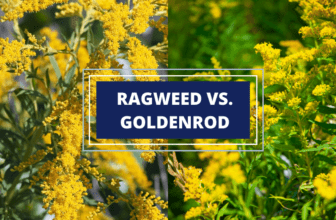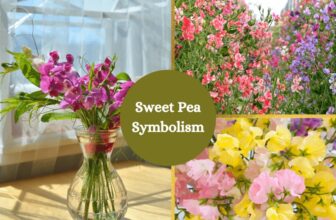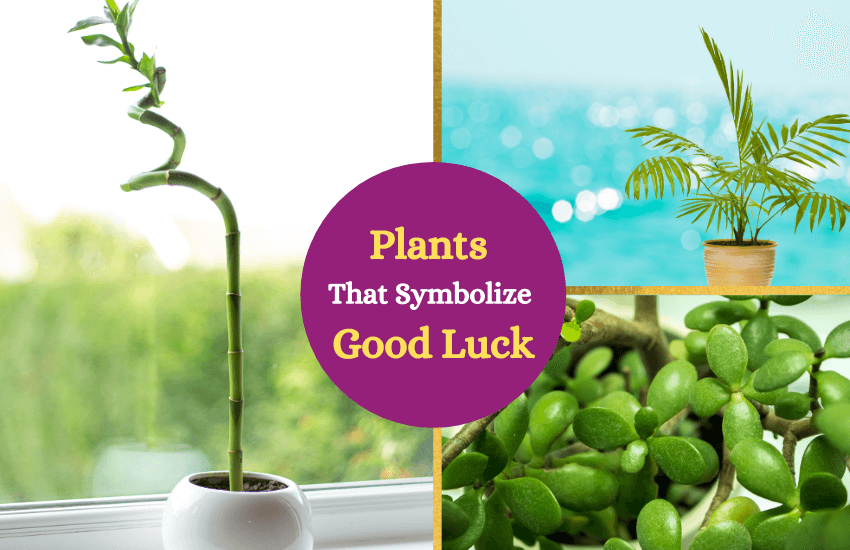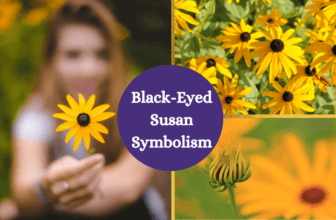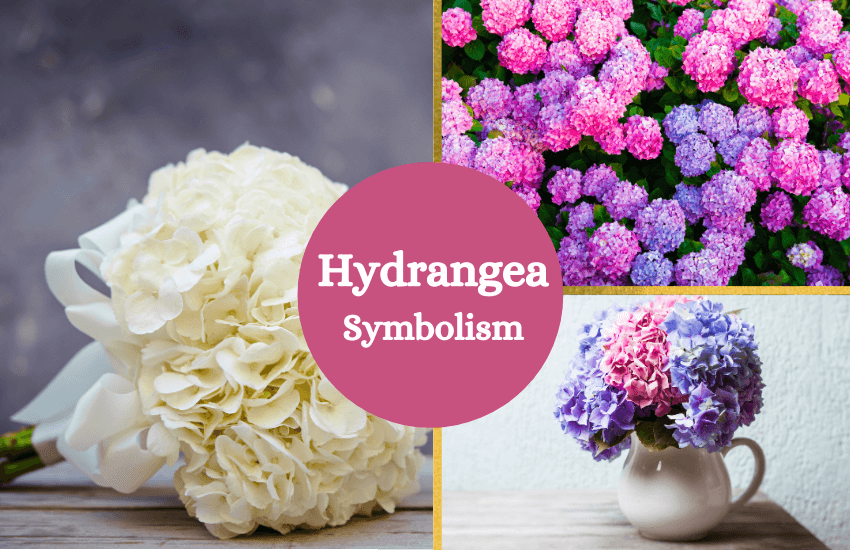
Table of Contents
Beloved for its beautiful clusters of flowers, hydrangeas bring diverse color and texture to the summer landscape. Here’s what you need to know about the most popular varieties of the flower, its dark side as a houseplant, and its significance today.
About Hydrangeas
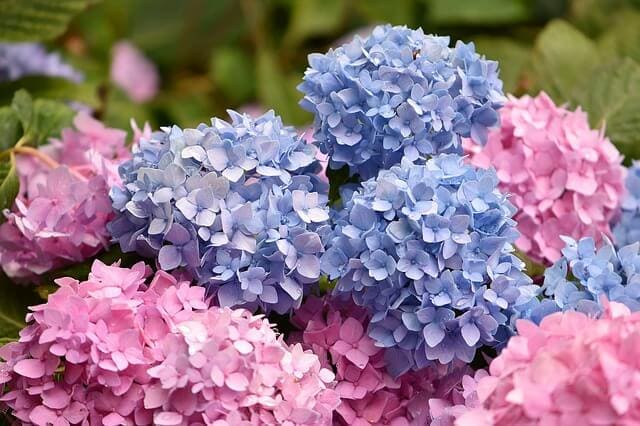
Native to Asia and Western Hemisphere, the Hydrangea is a genus of flowering plants and woody shrubs in the Hydrangeaceae family. Its name is derived from the Greek terms hydro, which means water, and angeion that translates as vessel. It’s thought to be a reference to the flower’s seedpods that resemble a traditional water pitcher.
Most varieties feature ball-like or pom-pom flower clusters, while others have elongated forms, especially the peegee or the H. paniculata. On the other hand, the lacecap hydrangeas have a lacy appearance, resembling flat caps with frilly edges. The H. arborescens ‘Abetwo’ has gained a trademark name Incrediball hydrangea due to the large size of its flowers.
These blooms come in a variety of colors including blue, pink, purple, green and white. Some hydrangeas even sport different colors in a single shrub. Interestingly, certain varieties display colors depending on the pH of the soil, such as pink in alkaline, and purple or blue in acidic soil, while others have fixed colors.
While most hydrangeas commonly reach around 2 to 9 meters in height, others can reach up to 15 meters, especially the H. petiolaris or the climbing hydrangea. In north temperate regions, these flowers bloom in the early spring to late fall, but they’re also grown in tropical and subtropical areas.
Note: These lovely blooms are poisonous when ingested. In fact, the flowers, buds, and leaves of the plant contain glycoside amygdalin, which can be broken down to produce cyanide. As you probably know, cyanide is a deadly poison. Also, you shouldn’t attempt to smoke dried hydrangeas, as it’ll likely produce a sublethal dose of cyanide gas.
Meaning and Symbolism of Hydrangeas
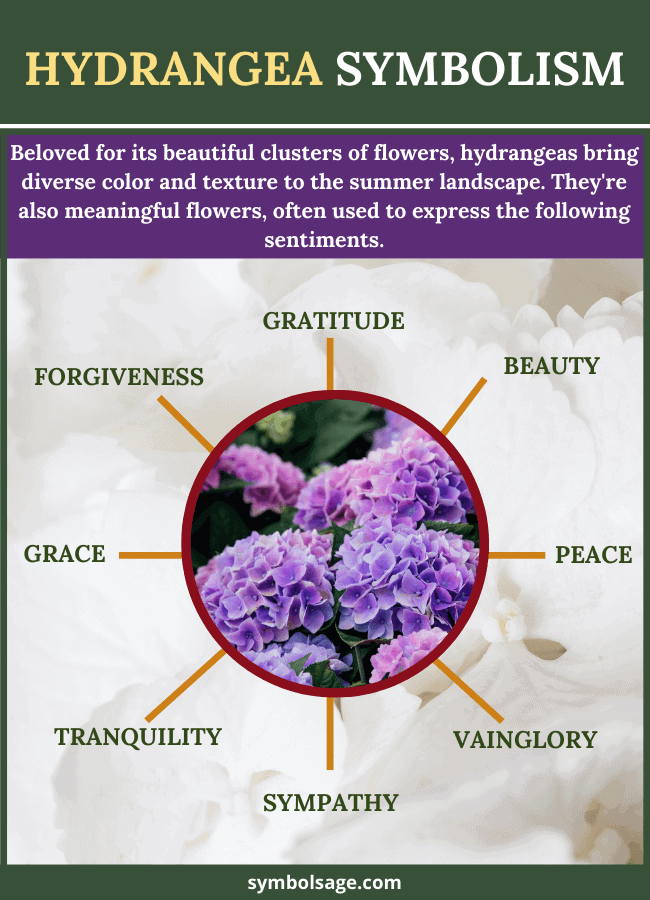
There remains some debate over the flower’s symbolism, as it has gained different meanings in different cultures. Here are some of them:
- A Symbol of Gratitude – Hydrangeas have lavish blooms, which associate them with appreciation and heartfelt praise. In some cultures, their shape is even seen as a resemblance for a beating heart.
- A Symbol of Forgiveness – In Japanese legend, the flower is associated with genuine emotions and apology. This symbolism comes from the story of an emperor who gave hydrangeas to the family of a woman he loved, as an apology for neglecting her. The flower simply says, “Thank you for understanding.”
- Beauty and Grace – Did you know hydrangeas are associated with four years of marriage? In some cultures, hydrangeas are used to symbolize a couple’s blossoming relationship. After all, the Fruit and Flowers is the traditional theme of a 4th wedding anniversary.
- Calmness and Peace – Hydrangeas can be seen in serene and soothing colors, making them associated with the feelings of tranquility.
- Dispassion and Heartlessness – Unfortunately, it also has negative associations, connected to ruthlessness and carelessness. In some instances, the bloom says, “You are cold.” In Europe, it’s thought that English men gave the flowers to women who rejected them to show they were cold and heartless.
- In some contexts, hydrangeas also symbolize false pride, boastfulness and vainglory because they produce dramatic blooms. It’s also believed that Victorians viewed them as a negative plant.
Uses of the Hydrangea Flower throughout History
In some cultures, hydrangea flowers are often used to make herbal teas and medicine, and even believed to have supernatural powers.
In Magic and Superstitions
In Japanese culture, hydrangeas are thought to have a powerful magical ability to ward off evil spirits. Some even carry or scatter its bark around their homes in hopes of breaking hexes, evil spells, curses, and malicious wishes.
In Tea and Drinks
Some wild varieties of the plant, especially the leaves of H. serrata, are utilized in making sweet teas. It contains phellodulcin, a substance that can be used as a sugar substitute. However, it’s not advisable to make tea from your own hydrangeas, as most variants are toxic.
In Japan, the fresh leaves of H. serrata are dried to make ceremonial teas for a Buddhist festival known as the Kanbutsu-e or Buddha’s Birthday. It’s even referred to as tea of heaven, which is poured over the statue of Buddha and drunk at the ceremony. In Korea, it’s used to make sugukcha or isulcha herbal tea.
In Medicine
Disclaimer
While hydrangea is likely unsafe when taken in large amounts, it’s sometimes used to treat kidney stones, bladder infections, urinary tract problems, and other conditions since it’s purported to have a diuretic effect.
In Decorative Arts
Hydrangeas became a dominant motif in textiles and carpets in the times of Louis XIV in France. It inspired artists, including Pierre-Joseph Redouté who is regarded as the greatest botanical illustrator of all-time and nicknamed the Raphael of flowers. The bloom is also featured in various watercolor paintings and portraits of women.
The Hydrangea Flower in Use Today
From lace-cap to mophead and snowball, there are endless varieties of the flower for every garden. Due to their luscious full shape, hydrangeas aren’t just a filler but a perfect statement flower for any arrangement, adding distinction to centerpieces, table runners, church door arches and wedding decorations. For a bridal posy, their beauty can stand on its own, but they wilt easily as they need lots of water when cut. Still, it’s perfect for a dramatic bouquet when paired with other flowers.
In jewelry design, many use the flower in resin-made necklaces, as well as imitating its appearance with precious metals and gemstones. In fashion, hydrangeas can be made into crowns of flowers for a bohemian-chic look in music festivals, romantic dinners, summer parties, and even weddings.
When to Give Hydrangea Flowers
These flowers are perfect for any occasion, including birthdays, holidays, and anniversaries. In fact, it’s the best gift for a couple celebrating their four-year milestone. As potted plants, they’re perfect for showing gratitude and appreciation on Mother’s Day.
In Japanese culture, it’s associated with apology and forgiveness. Hydrangea bouquets are also great for expressing sympathy, especially when the occasion calls for commemorating a special person or comforting someone.
Since the flower has some negative associations, it’s best to write down its positive meaning in a card, or even mix hydrangeas with other blooms to create a more meaningful bouquet.
In Brief
Despite many variations in its symbolic meanings, hydrangeas remain a favorite in gardens, bouquets, and flower arrangements. The bloom comes in a huge variety of colors, letting you capture the fun spirit of summer season.




